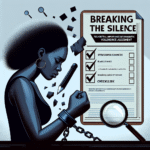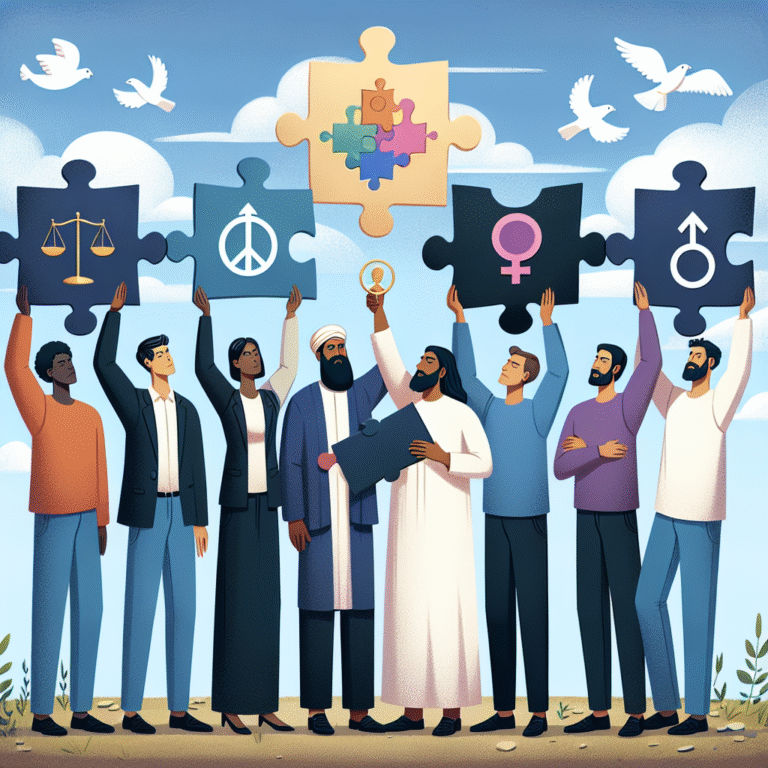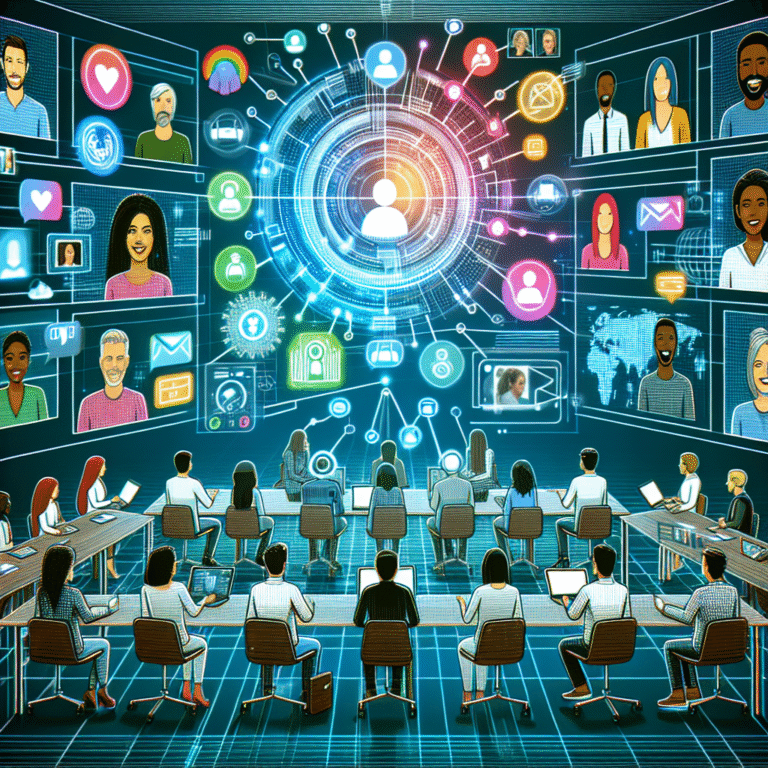
Introduction
In an ever-evolving world, the spectrum of gender identity is becoming increasingly recognized and celebrated. Among these identities, non-binary individuals represent a significant and vibrant part of this diverse tapestry. The phrase "Non-Binary and Proud: Stories of Self-Discovery and Acceptance" serves as both a rallying cry and a testament to the journeys many have undertaken to find their voice and identity in a world that often adheres to traditional binaries.
This article aims to explore the profound experiences of non-binary individuals, highlighting their stories of self-discovery and acceptance. By diving into real-life narratives, we will uncover the challenges faced, the triumphs celebrated, and the community built along the way. By the end of this exploration, we hope to inspire and inform, shedding light on this important aspect of human identity.
Understanding Non-Binary Identity
What Does Non-Binary Mean?
Non-binary is a term that describes gender identities that do not fall strictly within the traditional definitions of male or female. Non-binary individuals may identify as a mix of both genders, neither, or fall somewhere along the gender spectrum. Recognizing and respecting non-binary identities is crucial in fostering an inclusive society.
The Origins of Non-Binary Recognition
Historically, non-binary identities have existed across various cultures and societies. Many Indigenous cultures have recognized multiple gender identities, often referred to as Two-Spirit. In more contemporary contexts, the advent of social media and advocacy has propelled non-binary recognition into the spotlight, allowing individuals to share their stories and connect with like-minded people.
Why Acceptance Matters
Acceptance is a vital component of mental health and well-being. Non-binary individuals often face societal discrimination, misunderstanding, and internal conflict. By building a supportive community and fostering understanding, we can combat stigma and promote acceptance, encouraging everyone to embrace their identity with confidence.
Stories of Self-Discovery: Case Studies
1. Alex’s Journey: From Confusion to Clarity
Background: Alex grew up feeling different but couldn’t put their feelings into words.
Challenge: The struggle to find a name for their identity was compounded by the fear of rejection from family and friends.
Self-Discovery: Through researching online and connecting with LGBTQ+ groups, Alex discovered the term "non-binary." This revelation brought clarity and relief.
Analysis: Alex’s experience highlights the importance of community and resources in understanding one’s identity. Their journey reflects how education can empower individuals.
2. Jamie’s Transition: Embracing Authenticity
Background: Jamie had always felt the pressure to conform to traditional gender roles.
Challenge: Battling depression and anxiety stemming from feeling trapped in the wrong body.
Self-Discovery: After attending a support group, Jamie began to explore their gender identity and eventually embraced a non-binary identity.
Analysis: Jamie’s story emphasizes the impact of mental health on self-discovery. Support networks can be critical in fostering acceptance and peace.
3. Sam’s Advocacy: Finding Purpose in Acceptance
Background: Growing up in a conservative environment, Sam faced bullying and isolation.
Challenge: Despite the odds, Sam started a YouTube channel to share their experiences.
Self-Discovery: Through advocacy, Sam not only found acceptance but also inspired others to embrace their non-binary identities.
Analysis: Sam’s journey showcases how personal stories can resonate with broader audiences, helping to promote acceptance and awareness.
The Importance of Language in Non-Binary Identities
Pronouns Matter
Using correct pronouns is a simple yet powerful way to show respect for one’s identity. Common non-binary pronouns include they/them, ze/hir, and others. Educating ourselves and those around us about the preferred pronouns of non-binary individuals can foster a more inclusive environment.
Language Evolution
The language surrounding non-binary identities is continually evolving. Staying updated on terminology helps challenge stereotypes and misconceptions, allowing meaningful conversations about gender diversity.
| Common Pronouns | Usage Examples |
|---|---|
| They/Them | They are my friends. |
| Ze/Hir | Ze is my partner. |
Creating Supportive Environments
The Role of Allies
Allies play a crucial role in creating supportive spaces for non-binary individuals. This involves listening, advocating for rights, and using inclusive language.
Schools and Organizations: A Guiding Light
Educational institutions and workplaces can implement training and policies that emphasize acceptance and understanding of non-binary identities. Creating safe zones can promote open discussions and diminish bullying.
Non-Binary Representation in Media
Visibility Matters
Media representation of non-binary individuals can have a profound effect on societal awareness and acceptance. Successful non-binary figures—actors, writers, and activists—serve as role models, showing that diverse gender identities can thrive in the public eye.
The Impact of Social Media
Platforms like Instagram, TikTok, and Twitter have given non-binary voices a place to share their stories, challenge stereotypes, and build community. The visibility of these narratives helps normalize non-binary identities.
Conclusion
The path to self-discovery and acceptance for non-binary individuals is diverse, complex, and deeply personal. The stories shared under the banner "Non-Binary and Proud: Stories of Self-Discovery and Acceptance" illustrate the resilience, courage, and beauty of identity. By fostering understanding and support, we contribute to a more inclusive world where everyone can embrace their true selves without fear or stigma.
As we move forward, let us advocate for acceptance and provide spaces for all individuals to express their identities freely. Together, we can create a society that not only recognizes but celebrates the spectrum of gender.
FAQs
1. What does it mean to be non-binary?
Non-binary refers to gender identities that do not fit strictly within traditional definitions of male or female. Non-binary individuals may identify as a mix of both genders, neither, or somewhere along the gender spectrum.
2. How can I support a non-binary friend or family member?
You can support non-binary individuals by using their preferred pronouns, listening to their experiences, advocating for their rights, and fostering an environment of acceptance.
3. Are there health risks associated with being non-binary?
Non-binary individuals often face mental health risks due to societal discrimination and misunderstanding. It is essential to provide support and resources to mitigate these risks.
4. How can schools promote acceptance of non-binary identities?
Schools can promote acceptance by incorporating LGBTQ+ education, providing training for staff, creating safe spaces, and encouraging inclusive language among students.
5. Why is representation important for non-binary individuals?
Representation in media and society helps validate non-binary identities, fosters understanding, and encourages individuals to embrace their true selves, which can help reduce stigma and promote acceptance.
This exploration of "Non-Binary and Proud: Stories of Self-Discovery and Acceptance" aims to be not only informative but also a source of inspiration and empowerment. As we continue to broaden our understanding of gender identities, may we all strive for a world that celebrates diversity in all its forms.

















